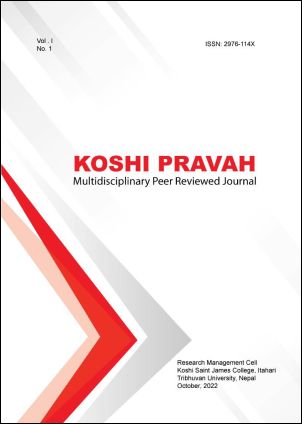Weak Form Market Efficiency in Nepalese Stock Market Indices
DOI:
https://doi.org/10.3126/koshipravah.v1i1.57370Keywords:
market efficiency, NEPSE, stock market, random walkAbstract
This paper analyses the weak-form market efficiency of the Nepalese stock market based on daily observation from Jan 23, 2019 to Jan 20, 2021, regarding returns of NEPSE, the composite index of Nepalese stock market, returns of banking sub-index and returns of manufacturing and processing sub-index. The study is conducted employing five tests of random walk i.e. Normality tests, Runs test, Autocorrelation functional test, Unit root test, and Variance ratio test. All tests produced consistent results except for the banking sub-index and manufacturing and production sub-index under variance ratio test and run test. It is concluded that the Nepalese stock market is not in weak-form market efficiency. The assumptions of an efficient stock market may not be materialized in the Nepalese context being a small and young market. The findings of the study report that investors have a favorable opportunity to predict stock price and generate abnormal gain from the Nepalese stock market.




